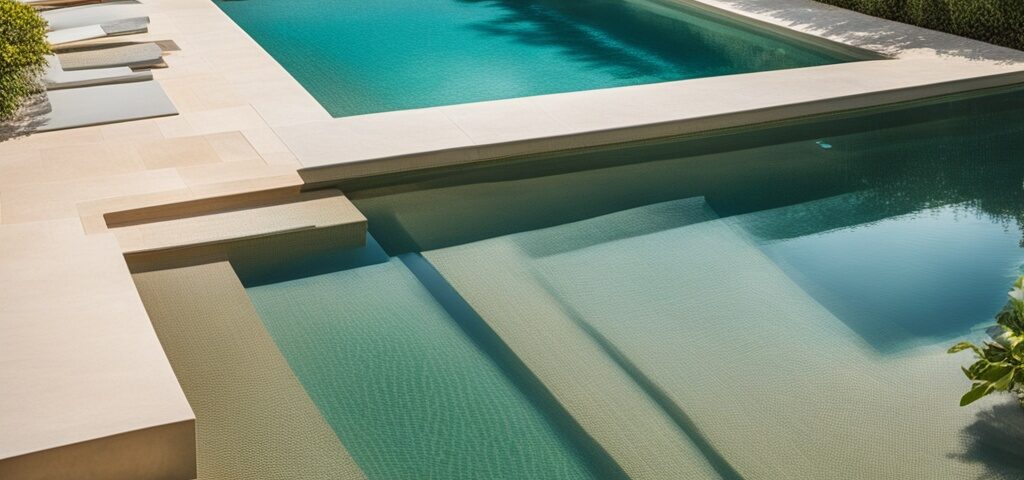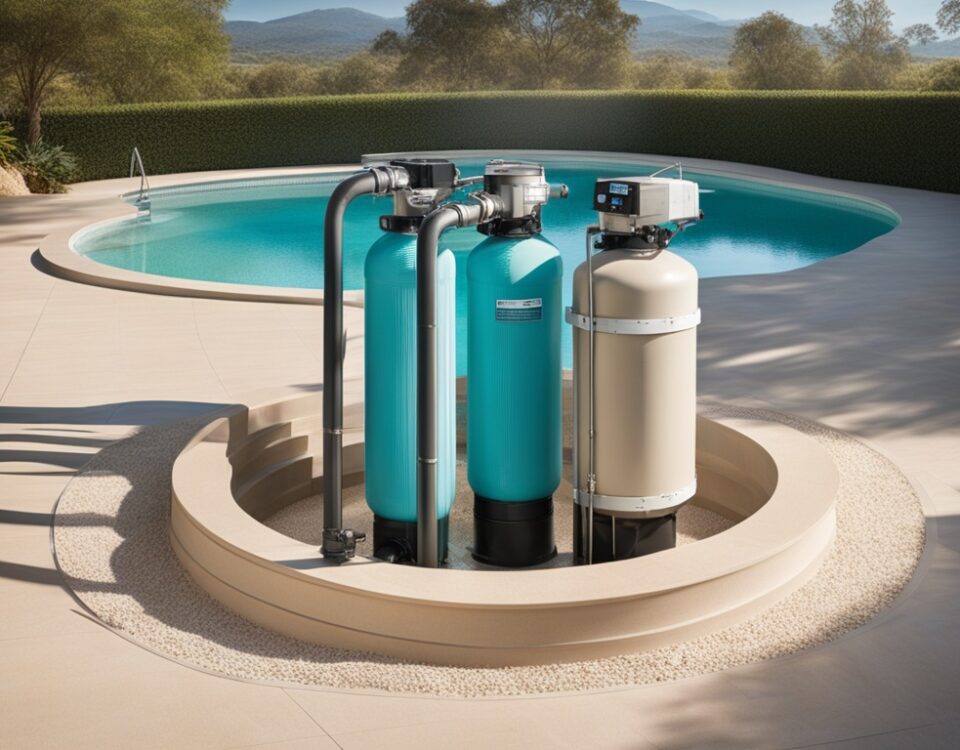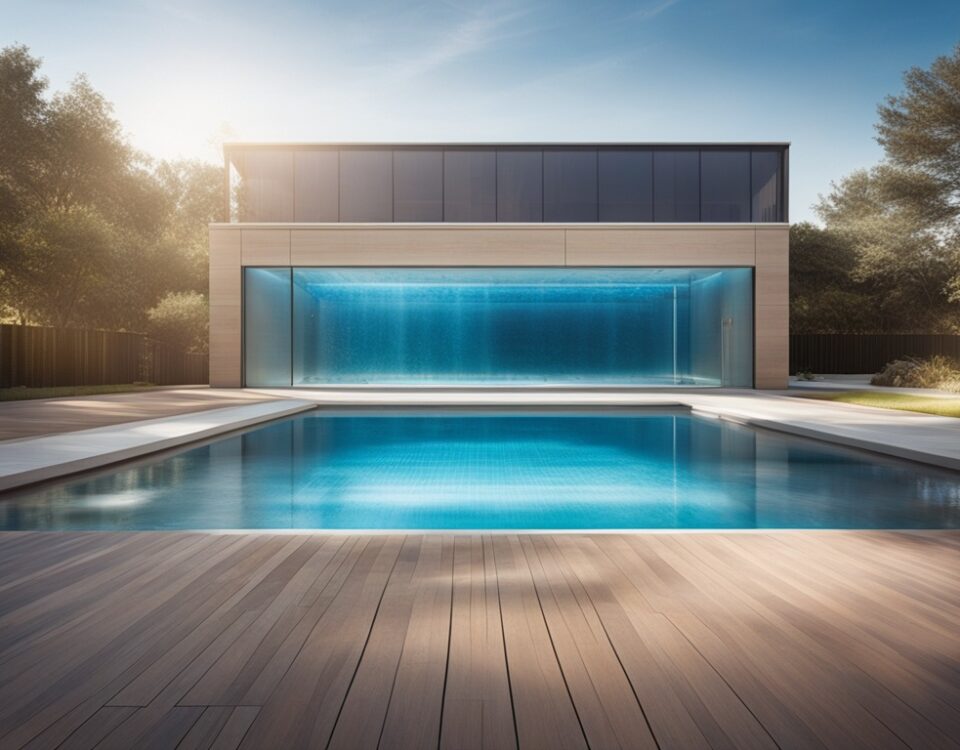Unlock the Secrets: Your Ultimate Guide to Choosing the Perfect Pool Filter

10 Stunning Backyard Pool Construction Ideas to Transform Your Outdoor Oasis
May 4, 2025
Unlocking the Power: Variable Speed Pool Pump Benefits Revealed!
May 4, 2025Understanding the Importance of a Pool Filter
The significance of a pool filter cannot be overstated; it is, in essence, the heart of pool maintenance. A well-functioning pool filter plays a *critical role* in ensuring that your swimming water remains clean, clear, and safe for year-round enjoyment. It effectively eliminates debris, contaminants, and microorganisms that can lead to health hazards, thereby creating an inviting environment for you and your guests.
The Mechanism Behind Pool Filters
To comprehend how a pool filter achieves its crucial task, one must delve into the mechanics of filtration. Pool filters operate by employing various methods, such as mechanical, chemical, and biological filtration, to purify the water. Mechanical filters physically trap particles such as leaves, dirt, and hair, while chemical filters use substances like chlorine to eradicate harmful bacteria. Lastly, biological filters enhance water quality by promoting beneficial bacteria that aid in breaking down organic matter.
Types of Pool Filters
While the intricate workings of pool filters are essential, it is equally important to understand the different types available: sand filters, cartridge filters, and diatomaceous earth (DE) filters. Each type offers distinct advantages, with *sand filters* being known for their ease of maintenance and durability, while cartridge filters require less water and chemicals. DE filters, on the other hand, provide the finest filtration but necessitate more attention. Making an informed choice among these options is crucial to enhancing the efficacy of your pool’s filtration system.
Health Risks Associated with Ineffective Filtering
The absence of an effective pool filter can lead to dire consequences, not only for the condition of your pool but also for the health of its users. Stagnant water filled with contaminants can result in algae growth, which not only tarnishes the aesthetic appeal of your pool but can also cause skin irritations and respiratory issues among swimmers. Moreover, pathogens thriving in unfiltered water pose serious health risks, such as gastrointestinal illnesses and skin infections.
Cost Implications of Poor Filtration
Neglecting the need for a reliable pool filter can have significant financial ramifications. Regular maintenance becomes increasingly costly when substantial debris accumulates in your pool, leading to potential damage to the pool structure and filtration systems. Additionally, frequent water treatments and increased chemical usage can inflate upkeep costs, ultimately burdening pool owners with unexpected expenses.
Enhancing Longevity and Enjoyment
Investing in a quality pool filter not only ensures *clean and hygienic water* but also contributes to the longevity of your pool. By effectively removing harmful particles and maintaining balanced water chemistry, a proper filtering system minimizes the risk of damage to pool surfaces and equipment. Consequently, diligent investment in a pool filter translates to increased enjoyment and reduced maintenance concerns, allowing you and your loved ones to savor the pleasures of your backyard oasis.
Types of Pool Filters Available
1. Sand Filters
Sand filters have been a popular choice among pool owners for decades. They utilize specially graded sand as a filtration medium, which captures debris and particles as water flows through. With a typical lifespan of 5 to 7 years, *sand filters* are relatively easy to maintain and operate.
Pros:
– Cost-effective: Generally more affordable to purchase and maintain than other types.
– Durable: A robust option that can last for several years with minimal upkeep.
– Ease of use: Simple backwash process for cleaning.
Cons:
– Limited filtration: Cannot trap smaller particles effectively; might require additional sanitation methods for clearer water.
– Space requirement: They generally occupy more space compared to cartridge or DE filters.
2. Cartridge Filters
Cartridge filters represent a modern solution, utilizing a fabric-like element for filtration. Known for their efficiency, they are capable of capturing particles as small as 10 to 15 microns, making them effective at maintaining sparkling water clarity.
Pros:
– High filtration efficiency: Excellent for capturing smaller debris.
– Low water waste: They do not require backwashing, leading to less water usage during cleaning.
– Compact design: Typically smaller and easier to install.
Cons:
– Replacement costs: The filter cartridges need periodic replacement, which can add up over time.
– Maintenance frequency: While easier to maintain than sand filters, they still require regular cleaning to function optimally.
3. Diatomaceous Earth (DE) Filters
Among the three, diatomaceous earth filters are arguably the most effective. They utilize a powder made from fossilized diatoms to provide an exceptionally high level of filtration, capturing particles as small as 2 to 5 microns. This makes them ideal for discerning pool owners who prioritize pristine water quality.
Pros:
– Superior filtration: Offers outstanding clarity by trapping microscopic particles.
– Longer intervals between cleaning: They tend to require less frequent cleaning due to their superior filtration capacity.
Cons:
– Higher initial cost: Generally more expensive to buy and maintain.
– Cleaning process: The cleaning process can be more complex, requiring a thorough understanding of operation.
Choosing the Right Filter for Your Pool
The decision on which filtration system to choose often hinges on factors such as pool size, usage level, and personal preference. For instance:
| Filter Type | Best Suited For | Pool Size | Usage Level |
|---|---|---|---|
| Sand Filter | Budget-conscious owners | Up to 30,000 gallons | Moderate usage |
| Cartridge Filter | Small to medium pools | Up to 20,000 gallons | Light to moderate usage |
| DE Filter | High-end, performance-focused owners | Any size | Heavy usage |
By weighing the pros and cons of each type, as well as considering the specific needs of your pool, you can make an informed decision that will preserve the *sanctity and clarity* of your aquatic sanctuary.
Factors to Consider Before Choosing a Pool Filter
Choosing the right pool filter is a vital decision for maintaining a pristine swimming environment. Several factors must be considered to ensure that the selected filter meets the specific needs of your pool. These considerations include pool size, flow rate, and maintenance requirements, all of which greatly influence the efficiency and effectiveness of your filtration system.
Pool Size
The size of your pool is one of the primary factors to keep in mind when selecting a filter. A filter that is too small for your pool’s volume will struggle to keep the water clean, leading to a murky and unhealthy swimming environment. Conversely, an oversized filter can be unnecessarily expensive and might complicate the filtration process. For optimal performance, it’s crucial to accurately calculate the gallons of water your pool holds and match it with the appropriate filter capacity.
Flow Rate
Another critical consideration is the flow rate. It is essential to choose a filter that has a flow rate suitable for your pool’s size and usage patterns. This measurement indicates how much water can be filtered in a given time, typically expressed in gallons per minute (GPM). An ideal flow rate allows for a complete turnover of the pool water at least once every eight hours. For aggregate calculations, consider creating a table that includes various pool sizes alongside the recommended flow rates:
| Pool Size (Gallons) | Recommended Flow Rate (GPM) |
|---|---|
| 10,000 | 20 |
| 15,000 | 30 |
| 20,000 | 40 |
Maintenance Requirements
Maintenance is another pivotal aspect to consider. Different pool filters have varying maintenance requirements that can significantly impact your overall enjoyment of the pool. While sand filters may require backwashing every few weeks, cartridge filters need cartridge replacements every 3-6 months. On the other hand, diatomaceous earth (DE) filters necessitate a more involved maintenance routine. When choosing a filter, evaluate how much time and effort you’re willing to commit to upkeep to ensure your pool remains clean without overburdening your schedule.
Budget Considerations
Your budget will inevitably play a significant role in your filter selection process. In addition to the initial purchase price of the filter itself, consider ongoing costs such as replacement parts, energy consumption, and chemicals required for maintenance. Striking a balance between quality and affordability will ensure that you make a wise investment without compromising your pool’s health or your financial stability. Research various models and brands to find a filter that aligns with your financial parameters.
Environmental Impact
In today’s eco-conscious world, the environmental impact of your pool filter choice is an essential factor. Energy-efficient filters can reduce electricity consumption, helping to lower your carbon footprint and utility bills. Furthermore, some filters are designed to minimize chemical usage, thus enhancing not only the ecological benefits but also the health of swimmers. Consider investing in sustainable options that align with your values while fulfilling your pool’s filtration needs.
Consulting with Pool Professionals
Lastly, engaging with pool professionals can provide invaluable insights when selecting the most suitable filter for your specific pool needs. Their expertise can guide you in assessing your unique situation, taking into account factors such as local climate, pool usage, and desired water quality. Their recommendations can help narrow down the options, making it easier to choose a filter that is both efficient and effective. Don’t hesitate to tap into this resourceful avenue, as it will undoubtedly enhance your decision-making process.
Evaluating Filter Efficiency and Performance
When selecting a pool filter, understanding its efficiency in capturing various types of debris and contaminants is paramount. One of the most effective ways to assess a filter’s efficiency is by examining its micron rating. This measurement indicates the smallest particle size that the filter can effectively capture. Generally, a lower micron rating signifies higher efficiency. For example, a filter with a rating of 10 microns will capture larger particles, while a filter rated at 1 micron can trap much smaller contaminants, such as bacteria and algae, significantly improving your pool’s water clarity and safety.
Assessing Different Debris Types
Different pool filters are designed to handle distinct types of debris. Sand filters are excellent for larger particles like leaves and dirt, while cartridge filters and diatomaceous earth (DE) filters excel at capturing finer particles. To evaluate a filter’s overall performance, it’s essential to consider the typical contaminants prevalent in your area—such as sand, dust, or organic matter. Moreover, if your pool is frequently exposed to heavy debris, selecting a filter with a robust capacity for larger particles may be necessary, as it can enhance the filter’s longevity and efficiency.
Understanding Impacting Factors
Several critical factors influence a pool filter’s performance, among which pump size holds particular significance. The pump must be appropriately matched to the filter to ensure optimal water flow and filtration efficiency. An undersized pump will struggle to push water through the filter, resulting in inadequate filtration, while an oversized pump can lead to increased wear and tear. Additionally, the flow rate of the filter is crucial; it should align with the pool’s total volume to ensure adequate turnover—typically aiming for a complete water turnover every 4 to 8 hours.
Maintenance Practices
Regular maintenance plays a fundamental role in maintaining a pool filter’s performance. Cleaning and replacing filter media—be it sand, cartridges, or DE—should be done as per the manufacturer’s recommendations, typically every few months or as needed based on the filter’s pressure gauge readings. Keeping an eye on these gauges allows pool owners to understand when the filter is under strain; a rising pressure level usually indicates that cleaning is necessary. Furthermore, routinely inspecting for wear and tear, ensuring proper sealing, and addressing leaks or cracks can significantly enhance filter efficiency.
Measuring Effectiveness Over Time
The effectiveness of a pool filter can also be quantitatively measured through water chemistry tests. Regularly testing pool water for clarity and contaminant levels provides insights into whether the filter is performing adequately. High levels of chlorine or cloudy water can indicate that the filter isn’t capturing all contaminants. Another method includes monitoring the dirt load in the filter; if the cleaning frequency increases dramatically, this may signal a decrease in effectiveness, necessitating a filter upgrade or full replacement.
Optimization Strategies
To optimize a pool filter’s effectiveness over time, consider incorporating variable speed pumps. These pumps allow for adjustable flow rates, enabling pool owners to match the filtration needs precisely. Furthermore, employing a filter timer can assist in maintaining consistent operation schedules, promoting thorough water turnover while conserving energy. Lastly, establishing a routine of seasonal deep cleans, where both the filter and surrounding pool equipment are meticulously examined and serviced, will sustain peak performance year-round.
| Filter Type | Micron Rating | Debris Type | Maintenance Frequency |
|---|---|---|---|
| Sand Filter | 20-40 microns | Larger debris (leaves, dirt) | Every 3-5 years |
| Cartridge Filter | 10-15 microns | Finer debris (hair, particles) | Every 1-2 years |
| Diatomaceous Earth Filter | 1-3 microns | Small particles (bacteria, algae) | Every 5 years |
Installation and Maintenance Tips for Pool Filters
Installing a New Pool Filter
Installing a new pool filter can seem daunting, but with a step-by-step approach, it can be a manageable task. First, ensure you gather all necessary tools, including wrenches, pipe fittings, and plumbing tape. Begin by turning off the power to your pool pump to prevent any accidents. Next, drain the pool to the appropriate level, making it easier to access the filter. If you are replacing an existing filter, disconnect it by removing the inlet and outlet plumbing connections.
Once the old filter is dismantled, position the new filter in the desired location, ensuring it is level. Attach the inlet and outlet pipes securely, using plumbing tape to prevent leaks. After this, connect the electrical components, being meticulous with the wiring. Finally, turn the power back on and test the system by running the pump and checking for any leaks.
Essential Maintenance Tips
The longevity and efficiency of your pool filter heavily depend on regular maintenance. Begin by routinely checking the filter’s pressure gauge. If it exceeds the normal operational range, it’s time to clean or backwash the filter. For sand filters, this typically involves backwashing until the water runs clear, while cartridge filters will need the cartridges to be removed and cleaned using a gentle spray of water.
In addition, ensure that you inspect and clean the skimmer and pump baskets, as debris can significantly affect filtration efficiency. Consider cleaning these baskets weekly to maintain optimal flow. Furthermore, regularly checking the water chemistry can help reduce unwanted particles, thus minimizing the workload of your filter.
Troubleshooting Common Issues
Even with diligent care, pool filters can encounter issues that may affect water quality. If you notice cloudy water, the first step is to check the filter pressure. A high pressure reading may indicate a clogged filter, while a low reading can suggest a malfunctioning pump. In both scenarios, a proper cleaning or replacement should be carried out.
Another common issue is the presence of algae or green water. In this case, it’s crucial to shock the pool and run the filter continuously for at least 24 hours. Additionally, inspecting the filter media for wear is essential. If discoloration or breakdown is detected, a replacement may be necessary for the water to remain clear and safe.
Maintaining Water Quality
Ultimately, the effectiveness of your filter lies in its ability to maintain water quality. Regularly testing the pool’s chemical balance (pH, chlorine levels, alkalinity) will provide insights into how well your filter is performing. Keeping the pool clean by skimming debris and using a vacuum in conjunction with the filter will also enhance water clarity.
Conclusion of Installation and Maintenance
Incorporating these installation and maintenance tips can significantly improve the performance and lifespan of your pool filter. A well-maintained filter not only ensures your swimming environment remains safe and enjoyable but also contributes to the overall efficiency of your pool system.
Eco-Friendly and Energy-Efficient Pool Filter Options
In an era where sustainability is paramount, choosing an eco-friendly pool filter has become not just a trend but a necessity. The market is now replete with innovative technologies that promise not only to keep your pool water pristine but also to minimize environmental impact. Products such as sand filters, cartridge filters, and advanced diatomaceous earth (DE) systems offer varying degrees of energy efficiency, making them viable choices for eco-conscious pool owners.
Innovative Technologies Driving Sustainability
Modern pool filters have evolved significantly, incorporating advanced technologies that reduce energy consumption and improve overall efficiency. For instance, variable-speed pumps paired with high-efficiency filters can drastically cut electricity use. These pumps allow operators to adjust the flow rate according to their needs, ensuring that the water circulates effectively while consuming less energy. Furthermore, many eco-friendly filters utilize natural filter media sourced from sustainable materials, which also contribute to a reduced carbon footprint.
Environmental Benefits of Eco-Friendly Filters
The environmental advantages of opting for an eco-friendly pool filter are manifold. Firstly, these filters typically require fewer chemicals for maintenance, thereby reducing the likelihood of water contamination. Secondly, by lowering the energy consumption associated with filtration, pool owners diminish greenhouse gas emissions linked to electricity production. Notably, filters that utilize natural filters media can improve local biodiversity by decreasing pollutants that may seep into surrounding ecosystems. This holistic approach envelops both human health and environmental stability.
Long-Term Cost Savings with Energy-Efficient Options
Investing in energy-efficient pool filters can yield substantial savings over time. While the initial cost may be higher, the reduced electricity bills can mitigate this expense, making eco-friendly options economically appealing. A variable-speed pump, for example, can save homeowners up to $400 annually on their energy bills compared to single-speed counterparts. Additionally, less frequent backwashing associated with high-efficiency filters leads to water conservation, further rounding out the financial benefits.
| Filter Type | Initial Cost | Annual Energy Savings | Water Conservation |
|---|---|---|---|
| Sand Filter | $300 – $800 | $100 – $200 | Moderate |
| Cartridge Filter | $250 – $600 | $150 – $300 | High |
| Diatomaceous Earth Filter | $500 – $1,200 | $200 – $400 | Moderate |
Conclusion: Making a Smart Choice
Choosing an eco-friendly and energy-efficient pool filter is both a responsible and economically sound decision. Not only do these filters contribute to a healthier environment, but they also present a practical solution for reducing long-term operating costs. As pool owners become increasingly aware of their environmental footprint, embracing sustainable options will not just be a preferred choice – it will be an essential step toward responsible pool ownership.
Making the Final Decision: Choosing the Right Pool Filter for You
Choosing the ideal pool filter is a crucial step in maintaining a pristine swimming environment. When embarking on this journey, there are several key points to consider that can significantly influence the longevity and effectiveness of your filtration system. From the type of filter to the size, *efficiency*, and environmental impact, each aspect plays a vital role in the overall health of your pool.
Key Points to Consider When Selecting a Pool Filter
- Type of Filter: The three main types of pool filters are sand, cartridge, and diatomaceous earth (DE) filters. Each has its unique characteristics, so it’s essential to understand which one aligns best with your pool’s specific requirements.
- Flow Rate: Ensure that the filter has an appropriate flow rate for your pool size. A higher flow rate can lead to better filtration, but be careful not to overdo it, as excessive pressure can damage your filter.
- Maintenance Needs: Consider how much maintenance you’re willing to invest in your pool system. Sand and DE filters generally require more upkeep compared to cartridge filters.
- Energy Efficiency: Look for filters that come equipped with energy-efficient designs. They not only save money on operational costs but also minimize your overall carbon footprint.
- Brand Reputation: Invest in products from reputable brands known for their quality and customer service. Reading reviews can help you weigh the reliability of different manufacturers.
Step-by-Step Guide to Help You Make an Informed Decision
- Assess Your Pool Size: Calculate the volume of your pool in gallons to ascertain the suitable flow rate and filter size.
- Determine Your Budget: Establish a budget that considers both the initial purchase price and long-term operating costs, including maintenance and potential replacement parts.
- Research Filter Types: Explore the pros and cons of each filter type to pinpoint which aligns with your preferences for maintenance and performance.
- Compare Options: Compile a list of potential filters and compare their specifications, costs, and user feedback to find the best fit for your needs.
- Consult Professionals: Don’t hesitate to reach out to pool experts or local retailers for insights that may not be readily available online.
As you navigate the myriad options available, it’s essential to prioritize quality, efficiency, and sustainability. Investing in a superior pool filter not only enhances the enjoyment of your pool but also contributes to a more environmentally-friendly ecosystem. Choose wisely, and your filtration system will serve you well for years to come.
Learn more about Swimming Pool

Javier Morales is passionate about pool design, maintenance, and outdoor living. With years of hands-on experience, he offers practical tips, creative ideas, and expert insights to help readers make the most of their pool spaces. At Piscina Planet, Javier shares everything from seasonal care guides to the latest trends in pool innovation.




